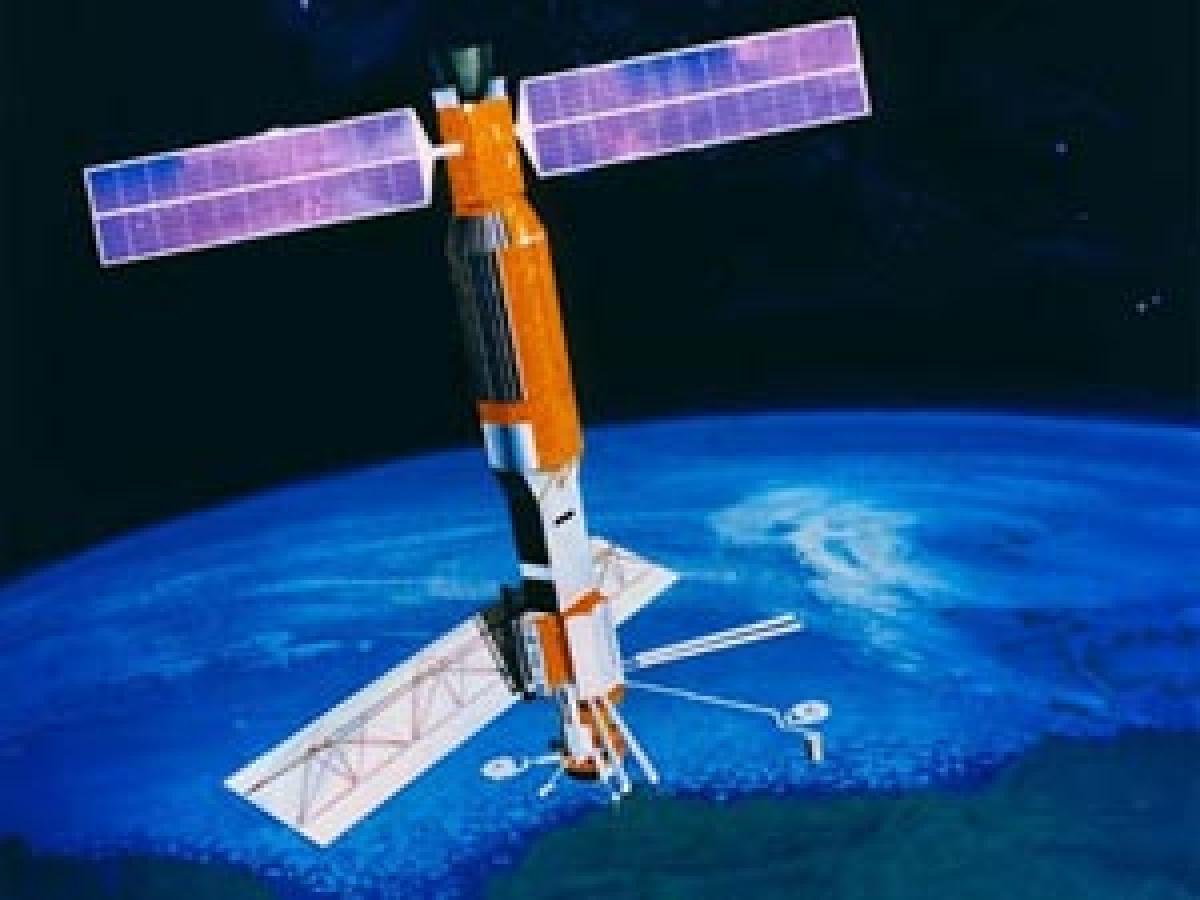Live
- Congress tied hands of our soldiers, we gave them full freedom to retaliate: PM Modi
- Big B on being honoured with Mangeshkar Award: ‘Abhaar aur mera param saubhagya’
- Fashion Entrepreneur Fund opens up for pre registrations
- ICEA shares blueprint for India to become a global leader in chip value chain
- Meera Deosthale describes marriage as a ‘beautiful union yet huge responsibility’
- 1 in 4 Indians came across political content that turned out to be deepfake: Report
- Summer diet tips for mom-to-be to stay hydrated and healthy
- Rajender Rao Congress candidate for Karimnagar
- How stress can affect you
- Empowering individuals with knowledge about disease
Just In

Considering the enhanced national requirements for launching satellites for earth observation, communication & navigation, the present capacity of launches is constrained. Therefore, an increase in the satellite launching frequency is needed in the coming years.
Considering the enhanced national requirements for launching satellites for earth observation, communication & navigation, the present capacity of launches is constrained. Therefore, an increase in the satellite launching frequency is needed in the coming years.
Until now, the Indian industries have been realizing several sub-systems including motor cases, structures, propellant tanks, liquid engines, control components and electronic packages. However, ISRO plays the lead role in carrying out the mission design, assembly & testing, quality assurance, integration and launch.
In order to achieve substantial increase in the launch frequency, ISRO is in the process of exploring the possibility of involving Indian industry towards stepping up the launch capacity within the country. ISRO is not seeking collaboration with other institutes in foreign countries, as part of Make in India campaign.
Satellites under operation in country: Currently, 34 satellites are operational in the country comprising:-
(i) 13 Communication Satellites namely, INSAT-3A, INSAT-3C, INSAT-4A, INSAT-4B, INSAT-4CR, GSAT-6, GSAT-7, GSAT-8, GSAT-10, GSAT-12, GSAT-14, GSAT-15 and GSAT-16;
(ii) 12 Earth Observation Satellites namely, Resourcesat-2, RISAT-1, RISAT-2, Cartosat-1, Cartosat-2, Cartosat-2A, Cartosat-2B, Oceansat-2, SARAL, Kalpana-1, Megha-Tropiques and INSAT-3D;
(iii) 7 Navigational Satellites namely, IRNSS-1A, 1B, 1C, 1D, 1E, 1F & 1G; and
(iv) 2 Space science Satellites namely Mars Orbiter Mission & Astrosat;
About 30 service providers are utilising Ku-band (a part of K band) transponders onboard indigenous communication satellites for various communication applications, which include Direct-To-Home Television, Digital Satellite News Gathering, telecommunication, VSAT services for banking, tele-education, business communication.
ISRO has an action plan in place for developing indigenous satellites, with the participation of Indian industries, for earth observation, communication, navigation and space science and planetary exploration. India has plan to realise GSAT-11 spacecraft for launch during the end of 2016 or first quarter of 2017.
GSAT-11 is a first generation high throughput communication satellite with a lift-off mass of about 5600 kg, operating in Ka/Ku bands. At present, the indigenous capability to launch this weight class of satellite is not available. ISRO has signed MoU/ Cooperative agreements for exploration and use of outer space with 37 countries.
Application possibilities in the field of remote sensing addressed in these MoUs include - natural resource management; vegetation biomass estimation; meteorological & oceanographic applications; atmospheric parameter retrieval & modelling; climate monitoring and weather forecasting; disaster management support.

© 2024 Hyderabad Media House Limited/The Hans India. All rights reserved. Powered by hocalwire.com







